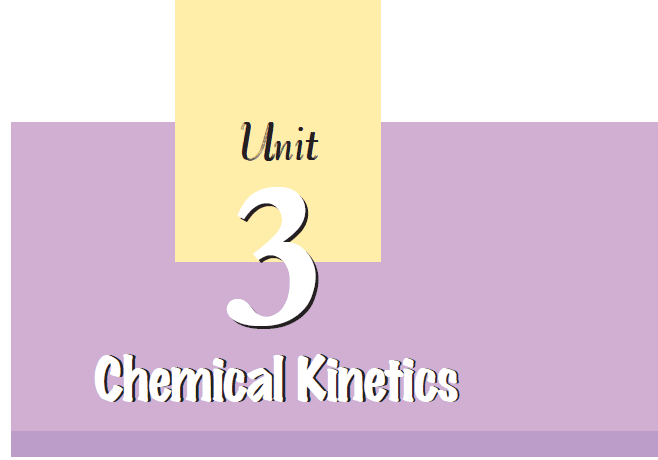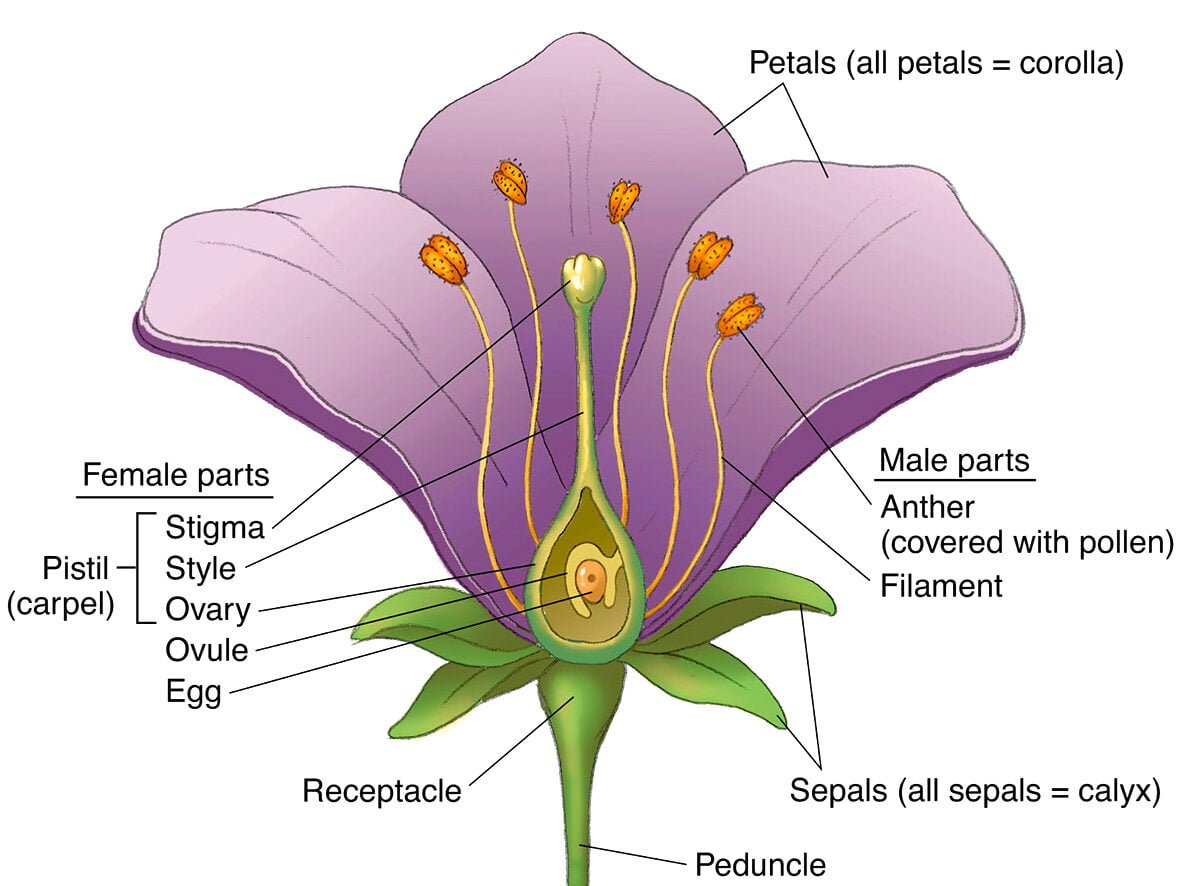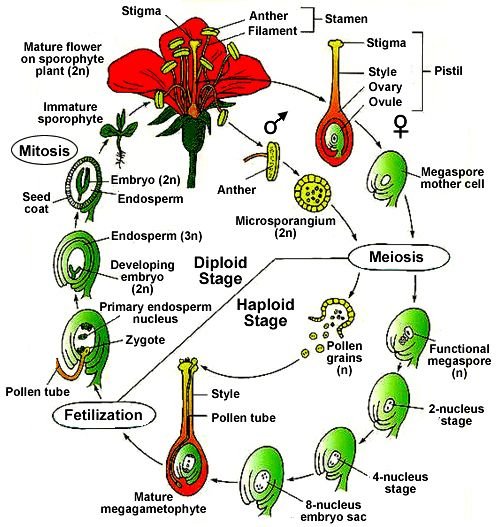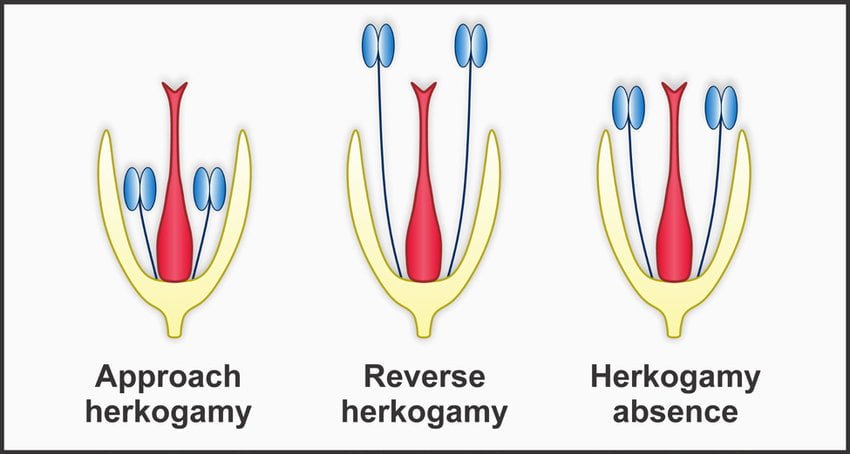Intext Questions Solutions
3.1 For the reaction R → P, the concentration of a reactant changes from 0.03M to 0.02M in 25 minutes. Calculate the average rate of reaction using units of time both in minutes and seconds.
Solution:
Average rate = \(-\frac{\Delta[R]}{\Delta t} = -\frac{(0.02 – 0.03)}{25 \text{ min}} = \frac{0.01}{25} = 4 \times 10^{-4} \text{ M min}^{-1}\)
In seconds: \(4 \times 10^{-4} \text{ M min}^{-1} \times \frac{1 \text{ min}}{60 \text{ s}} = 6.66 \times 10^{-6} \text{ M s}^{-1}\)
3.2 In a reaction, 2A → Products, the concentration of A decreases from 0.5 mol L⁻¹ to 0.4 mol L⁻¹ in 10 minutes. Calculate the rate during this interval?
Solution:
Rate = \(-\frac{1}{2}\frac{\Delta[A]}{\Delta t} = -\frac{1}{2}\frac{(0.4 – 0.5)}{10} = \frac{0.1}{20} = 0.005 \text{ mol L}^{-1} \text{ min}^{-1}\)
3.3 For a reaction, A + B → Product; the rate law is given by, r = k [A]¹/² [B]². What is the order of the reaction?
Solution:
Order = sum of exponents = \(\frac{1}{2} + 2 = 2.5\)
The reaction is 2.5 order overall.
3.4 The conversion of molecules X to Y follows second order kinetics. If concentration of X is increased to three times how will it affect the rate of formation of Y?
Solution:
For second order: Rate = k[X]²
If [X] becomes 3[X], new rate = k(3[X])² = 9k[X]²
The rate will increase by 9 times.
3.5 A first order reaction has a rate constant 1.15 × 10⁻³ s⁻¹. How long will 5 g of this reactant take to reduce to 3 g?
Solution:
For first order: \( t = \frac{2.303}{k} \log \frac{[A]_0}{[A]} \)
\( t = \frac{2.303}{1.15 \times 10^{-3}} \log \frac{5}{3} = 2002.6 \times \log(1.6667) \)
\( t = 2002.6 \times 0.2218 = 444 \text{ seconds} \)
3.6 Time required to decompose SO₂Cl₂ to half of its initial amount is 60 minutes. If the decomposition is a first order reaction, calculate the rate constant of the reaction.
Solution:
For first order: \( t_{1/2} = \frac{0.693}{k} \)
\( k = \frac{0.693}{t_{1/2}} = \frac{0.693}{60 \times 60 \text{ s}} = 1.925 \times 10^{-4} \text{ s}^{-1} \)
3.7 What will be the effect of temperature on rate constant?
Solution:
According to Arrhenius equation, the rate constant increases exponentially with temperature:
\( k = Ae^{-E_a/RT} \)
As temperature increases, the exponential term decreases (becomes less negative), causing k to increase.
3.8 The rate of the chemical reaction doubles for an increase of 10K in absolute temperature from 298K. Calculate Eₐ.
Solution:
\( \log \frac{k_2}{k_1} = \frac{E_a}{2.303R} \left( \frac{T_2 – T_1}{T_1T_2} \right) \)
Given \( \frac{k_2}{k_1} = 2 \), T₁ = 298K, T₂ = 308K
\( \log 2 = \frac{E_a}{2.303 \times 8.314} \left( \frac{10}{298 \times 308} \right) \)
\( 0.3010 = \frac{E_a}{19.147} \times 1.089 \times 10^{-4} \)
\( E_a = \frac{0.3010 \times 19.147}{1.089 \times 10^{-4}} = 52,897 \text{ J mol}^{-1} = 52.9 \text{ kJ mol}^{-1} \)
3.9 The activation energy for the reaction 2 HI(g) → H₂(g) + I₂(g) is 209.5 kJ mol⁻¹ at 581K. Calculate the fraction of molecules of reactants having energy equal to or greater than activation energy?
Solution:
Fraction = \( e^{-E_a/RT} = \exp \left( -\frac{209500}{8.314 \times 581} \right) \)
\( = \exp(-43.36) = 1.471 \times 10^{-19} \)
Exercise Questions Solutions
3.1 From the rate expression for the following reactions, determine their order of reaction and the dimensions of the rate constants.
Solution:
(i) 3NO(g) → N₂O(g): Rate = k[NO]²
Order = 2
Units: mol L⁻¹ s⁻¹ / (mol L⁻¹)² = L mol⁻¹ s⁻¹
(ii) H₂O₂(aq) + 3I⁻(aq) + 2H⁺ → 2H₂O(l) + I₃⁻: Rate = k[H₂O₂][I⁻]
Order = 1 + 1 = 2
Units: L mol⁻¹ s⁻¹
(iii) CH₃CHO(g) → CH₄(g) + CO(g): Rate = k[CH₃CHO]³/²
Order = 1.5
Units: mol L⁻¹ s⁻¹ / (mol L⁻¹)¹·⁵ = L⁰·⁵ mol⁻⁰·⁵ s⁻¹
(iv) C₂H₅Cl(g) → C₂H₄(g) + HCl(g): Rate = k[C₂H₅Cl]
Order = 1
Units: s⁻¹
3.2 For the reaction: 2A + B → A₂B, the rate = k[A][B]² with k = 2.0 × 10⁻⁶ mol⁻² L² s⁻¹. Calculate the initial rate when [A] = 0.1 mol L⁻¹, [B] = 0.2 mol L⁻¹. Calculate the rate after [A] is reduced to 0.06 mol L⁻¹.
Solution:
Initial rate:
Rate = k[A][B]² = 2.0 × 10⁻⁶ × 0.1 × (0.2)² = 8 × 10⁻⁹ mol L⁻¹ s⁻¹
When [A] is reduced to 0.06 mol L⁻¹:
Amount of A reacted = 0.1 – 0.06 = 0.04 mol L⁻¹
Amount of B reacted = 0.04/2 = 0.02 mol L⁻¹ (stoichiometry 2:1)
New [B] = 0.2 – 0.02 = 0.18 mol L⁻¹
New rate = 2.0 × 10⁻⁶ × 0.06 × (0.18)² = 3.89 × 10⁻⁹ mol L⁻¹ s⁻¹
3.3 The decomposition of NH₃ on platinum surface is zero order reaction. What are the rates of production of N₂ and H₂ if k = 2.5 × 10⁻⁴ mol⁻¹ L s⁻¹?
Solution:
2NH₃ → N₂ + 3H₂
Rate = \(-\frac{1}{2}\frac{d[NH₃]}{dt} = \frac{d[N₂]}{dt} = \frac{1}{3}\frac{d[H₂]}{dt} = k = 2.5 × 10⁻⁴ mol L⁻¹ s⁻¹
\(\frac{d[N₂]}{dt} = 2.5 × 10⁻⁴ mol L⁻¹ s⁻¹\)
\(\frac{d[H₂]}{dt} = 3 × 2.5 × 10⁻⁴ = 7.5 × 10⁻⁴ mol L⁻¹ s⁻¹\)
3.4 The decomposition of dimethyl ether leads to formation of CH₄, H₂ and CO and the reaction rate is given by Rate = k [CH₃OCH₃]³/². If the pressure is measured in bar and time in minutes, what are the units of rate and rate constants?
Solution:
Rate units: bar min⁻¹
Rate = k(P)³/² ⇒ k = Rate/(P)³/²
k units: bar min⁻¹ / bar³/² = bar⁻¹/² min⁻¹
3.5 Mention the factors that affect the rate of a chemical reaction.
Solution:
- Concentration of reactants (for non-zero order reactions)
- Temperature of the system
- Presence of a catalyst
- Surface area of reactants (for heterogeneous reactions)
- Nature of reactants and products
- Radiation (for photochemical reactions)
3.6 A reaction is second order with respect to a reactant. How is the rate of reaction affected if the concentration of the reactant is (i) doubled (ii) reduced to half?
Solution:
For second order: Rate = k[A]²
(i) When [A] is doubled: New rate = k(2[A])² = 4k[A]² → Rate becomes 4 times
(ii) When [A] is halved: New rate = k([A]/2)² = k[A]²/4 → Rate becomes 1/4th
3.7 What is the effect of temperature on the rate constant of a reaction? How can this effect be represented quantitatively?
Solution:
The rate constant increases with temperature according to Arrhenius equation:
\( k = Ae^{-E_a/RT} \)
or \(\ln k = \ln A – \frac{E_a}{RT}\)
Where:
A = pre-exponential factor
Eₐ = activation energy
R = gas constant
T = absolute temperature
3.8 In a pseudo first order reaction in water, the following results were obtained. Calculate the average rate between 30 to 60 seconds.
| t/s |
0 |
30 |
60 |
90 |
| [A]/mol L⁻¹ |
0.55 |
0.31 |
0.17 |
0.085 |
Solution:
Average rate = \(-\frac{\Delta[A]}{\Delta t} = -\frac{(0.17 – 0.31)}{(60 – 30)} = \frac{0.14}{30} = 4.67 \times 10^{-3} \text{ mol L}^{-1} \text{ s}^{-1}\)
3.9 A reaction is first order in A and second order in B. (i) Write differential rate equation. (ii) How is rate affected by increasing B three times? (iii) How is rate affected when both A and B are doubled?
Solution:
(i) Rate = \(k[A][B]^2\)
(ii) When [B] is tripled: New rate = \(k[A](3[B])^2 = 9k[A][B]^2\) → Rate becomes 9 times
(iii) When both doubled: New rate = \(k(2[A])(2[B])^2 = 8k[A][B]^2\) → Rate becomes 8 times
3.10 Determine the order with respect to A and B from the given data:
| [A]/mol L⁻¹ |
0.20 |
0.20 |
0.40 |
| [B]/mol L⁻¹ |
0.30 |
0.10 |
0.05 |
| r₀/mol L⁻¹s⁻¹ |
5.07 × 10⁻⁵ |
5.07 × 10⁻⁵ |
1.43 × 10⁻⁴ |
Solution:
Comparing experiments 1 and 2 where [A] is constant:
\(\frac{r_1}{r_2} = \frac{k[A]^x[B]^y}{k[A]^x[B]^y} = \left( \frac{[B]_1}{[B]_2} \right)^y\)
\(\frac{5.07 \times 10^{-5}}{5.07 \times 10^{-5}} = \left( \frac{0.30}{0.10} \right)^y ⇒ 1 = 3^y ⇒ y = 0\)
Order with respect to B is zero.
Comparing experiments 2 and 3 where [B] changes but order w.r.t. B is zero:
\(\frac{r_3}{r_2} = \left( \frac{[A]_3}{[A]_2} \right)^x\)
\(\frac{1.43 \times 10^{-4}}{5.07 \times 10^{-5}} = \left( \frac{0.40}{0.20} \right)^x ⇒ 2.82 = 2^x ⇒ x ≈ 1.5\)
Order with respect to A is 1.5.
3.11 Determine the rate law and rate constant for the reaction 2A + B → C + D from given data.
| Experiment |
[A]/mol L⁻¹ |
[B]/mol L⁻¹ |
Initial rate/mol L⁻¹ min⁻¹ |
| I |
0.1 |
0.1 |
6.0 × 10⁻³ |
| II |
0.3 |
0.2 |
7.2 × 10⁻² |
| III |
0.3 |
0.4 |
2.88 × 10⁻¹ |
| IV |
0.4 |
0.1 |
2.40 × 10⁻² |
Solution:
Let rate = k[A]ˣ[B]ʸ
From experiments I and IV (where [B] is constant):
\(\frac{2.40 \times 10^{-2}}{6.0 \times 10^{-3}} = \left( \frac{0.4}{0.1} \right)^x ⇒ 4 = 4^x ⇒ x = 1\)
From experiments II and III (where [A] is constant):
\(\frac{2.88 \times 10^{-1}}{7.2 \times 10^{-2}} = \left( \frac{0.4}{0.2} \right)^y ⇒ 4 = 2^y ⇒ y = 2\)
Rate law: Rate = k[A][B]²
Calculating k using experiment I:
\(6.0 \times 10^{-3} = k(0.1)(0.1)^2 ⇒ k = 6.0 \text{ L}^2 \text{ mol}^{-2} \text{ min}^{-1}\)
3.12 The reaction between A and B is first order w.r.t. A and zero order w.r.t. B. Fill in the blanks:
| Experiment |
[A]/mol L⁻¹ |
[B]/mol L⁻¹ |
Initial rate/mol L⁻¹ min⁻¹ |
| I |
0.1 |
0.1 |
2.0 × 10⁻² |
| II |
– |
0.2 |
4.0 × 10⁻² |
| III |
0.4 |
0.4 |
– |
| IV |
– |
0.2 |
2.0 × 10⁻² |
Solution:
Rate = k[A] (since zero order in B)
From experiment I: 2.0 × 10⁻² = k(0.1) ⇒ k = 0.2 min⁻¹
II: 4.0 × 10⁻² = 0.2 × [A] ⇒ [A] = 0.2 mol L⁻¹
III: Rate = 0.2 × 0.4 = 8.0 × 10⁻² mol L⁻¹ min⁻¹
IV: 2.0 × 10⁻² = 0.2 × [A] ⇒ [A] = 0.1 mol L⁻¹
3.13 Calculate the half-life of a first order reaction from their rate constants: (i) 200 s⁻¹ (ii) 2 min⁻¹ (iii) 4 years⁻¹
Solution:
For first order: \( t_{1/2} = \frac{0.693}{k} \)
(i) \( t_{1/2} = \frac{0.693}{200} = 3.465 \times 10^{-3} \text{ s} \)
(ii) \( t_{1/2} = \frac{0.693}{2} = 0.3465 \text{ min} \)
(iii) \( t_{1/2} = \frac{0.693}{4} = 0.17325 \text{ years} \)
3.14 The half-life for radioactive decay of ¹⁴C is 5730 years. An artifact had only 80% of ¹⁴C found in living tree. Estimate the age of sample.
Solution:
For first order: \( k = \frac{0.693}{t_{1/2}} = \frac{0.693}{5730} = 1.209 \times 10^{-4} \text{ year}^{-1} \)
\( t = \frac{2.303}{k} \log \frac{[A]_0}{[A]} = \frac{2.303}{1.209 \times 10^{-4}} \log \frac{100}{80} \)
\( t = 19047.2 \times \log(1.25) = 19047.2 \times 0.09691 = 1846 \text{ years} \)
3.15 For decomposition of N₂O₅, (i) Plot [N₂O₅] vs t (ii) Find half-life (iii) Plot log[N₂O₅] vs t (iv) Rate law (v) Calculate k (vi) Compare half-life from k
Solution:
(i) and (iii) Plots would show exponential decay and straight line respectively (graphs not shown here)
(ii) From data, concentration reduces from 1.63 × 10⁻² to 0.815 × 10⁻² in ~1400 s ⇒ t₁/₂ ≈ 1400 s
(iv) Since log plot is linear, it’s first order: Rate = k[N₂O₅]
(v) Slope of log plot = -k/2.303
Using two points (0, 1.63) and (3200, 0.35):
Slope = \(\frac{\log(0.35) – \log(1.63)}{3200 – 0} = \frac{-0.4559 – 0.2122}{3200} = -2.0875 \times 10^{-4}\)
\( k = -slope \times 2.303 = 4.81 \times 10^{-4} \text{ s}^{-1} \)
(vi) Calculated t₁/₂ = 0.693/k = 1441 s, which matches well with observed value
3.16 The rate constant for a first order reaction is 60 s⁻¹. How much time will it take to reduce initial concentration to 1/16th value?
Solution:
\( \frac{[A]}{[A]_0} = \frac{1}{16} \)
For first order: \( t = \frac{2.303}{k} \log \frac{[A]_0}{[A]} = \frac{2.303}{60} \log 16 \)
\( t = 0.03838 \times 1.2041 = 0.0462 \text{ s} \)
3.17 ⁹⁰Sr has half-life of 28.1 years. If 1μg was absorbed, how much will remain after (a) 10 years (b) 60 years?
Solution:
\( k = \frac{0.693}{28.1} = 0.02466 \text{ year}^{-1} \)
(a) After 10 years:
\( \ln \frac{[A]}{[A]_0} = -kt ⇒ \frac{[A]}{[A]_0} = e^{-0.02466 \times 10} = e^{-0.2466} = 0.7815 \)
Amount left = 1μg × 0.7815 = 0.7815 μg
(b) After 60 years:
\( \frac{[A]}{[A]_0} = e^{-0.02466 \times 60} = e^{-1.4796} = 0.2279 \)
Amount left = 1μg × 0.2279 = 0.2279 μg




